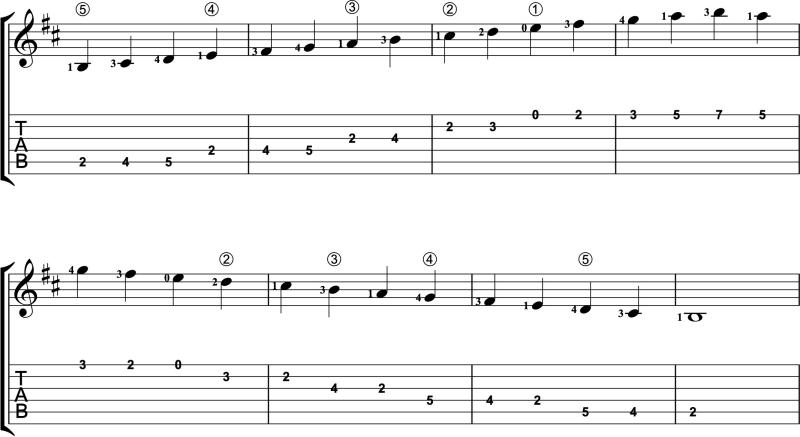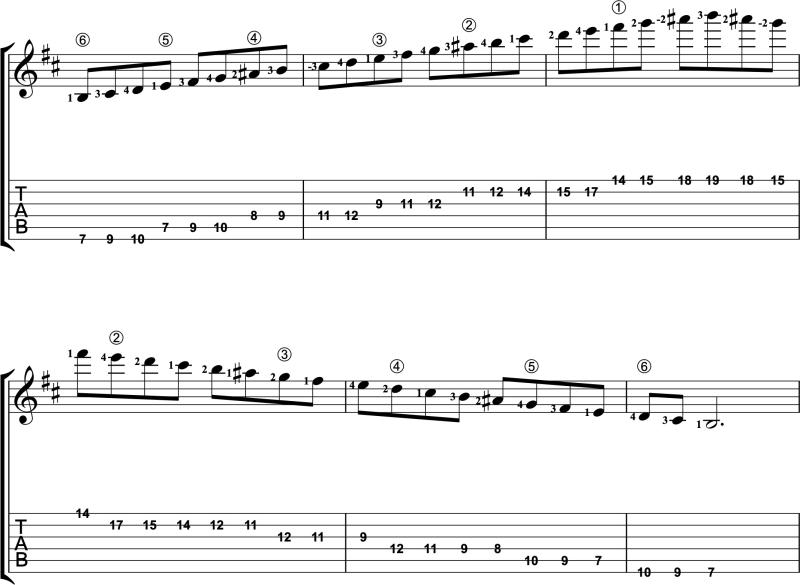How to play the B minor scale on classical guitar
The B minor scale is an essential scale to learn on the guitar. We play a lot of music in either the key of B minor or the key of D Major, which is the relative Major key to B minor.
Note names
- B
- C#
- D
- E
- F#
- G
- A
- B
Key signature
There are two sharps in the B minor key signature, exactly like D Major: F# and C#. If you are playing in a harmonic minor scale, you’ll also see A#’s. If you’re playing a melodic minor scale you’ll see F#, C#, G#, and A# as well.
One-octave B minor scale
The one-octave B minor scale starts in second position. Go here if you need a refresher on playing in positions.
Let’s start with our 1 finger on the B on the second fret of the fifth string. This scale avoids all open strings, which is very comfortable for the hand and allows you to stay in second position.

Two-octave B minor scale
This scale is very similar to the one-octave, but we will use the open first string to shift up into fifth position for some of the higher notes.

Three-octave B minor scale
Our three-octave scale starts on the sixth string and goes all the way up to the 19th fret. On many classical guitars that is the highest fret available! So you’ll need to get comfortable playing in upper positions before tackling this scale.

B minor scale in classical guitar repertoire
The key of B minor is quite popular in classical guitar music so there are many examples of this scale in the repertoire.
Study in B minor, Op.35, No.22 by Fernando Sor
Sarabande from Violin Partita No.1 (BWV 1002) by J.S. Bach
Allegro solemne from La Catedral by Agustín Barrios Mangoré

Leave A Comment